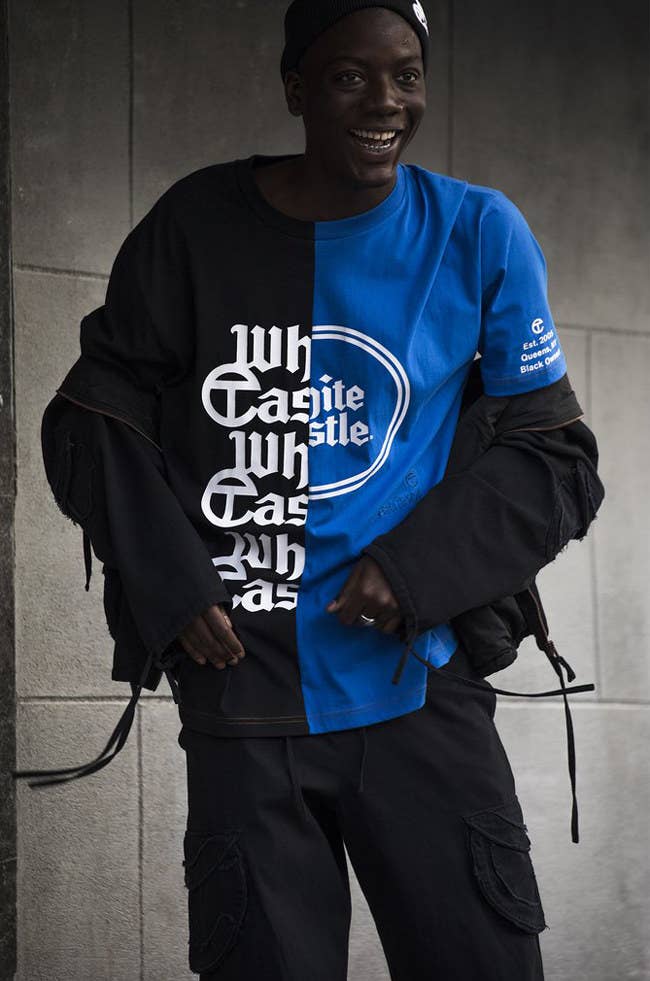Understanding Clothes: The Significance of Textile Selections in Your Wardrobe
The choice of material in clothes plays a critical function in both appearances and performance. Various materials provide varying levels of toughness, breathability, and comfort, directly influencing the wearer's experience. Understanding these nuances can improve one's closet noticeably. Numerous forget just how these selections can impact not just individual style, however likewise sustainability. What textile choices could redefine your closet and align it with both style and responsibility?
The Role of Fabric in Fashion and Performance

Typical Fabric Types and Their Characteristics
When picking garments, understanding the qualities of typical textile kinds is vital for making educated choices. Cotton, a widely-used all-natural fiber, is known for its adaptability, breathability, and softness, making it appropriate for informal wear and day-to-day garments. Bed linen, an additional all-natural alternative, flaunts outstanding moisture-wicking residential properties and a distinctive appearance, suitable for cozy climates.Wool, commonly favored for its heat and durability, differs in fineness; merino wool is soft versus the skin, while coarser types are made use of for outerwear. Artificial fabrics like polyester and nylon offer longevity and resistance to creases, making them prominent for activewear and travel garments. Blends, which incorporate all-natural and artificial fibers, can improve capability while preserving convenience. By identifying these material qualities, people can select clothing that aligns with their lifestyle and aesthetic preferences.
Breathability and Convenience: Selecting the Right Fabrics for Various Environments
Selecting the right textiles for numerous environments can significantly enhance comfort and total wearability. Breathable materials are necessary in hot environments, as they enable air circulation and wetness evaporation. Fabrics such as cotton, linen, and moisture-wicking synthetics successfully draw sweat away from the body, keeping the wearer cool and completely dry. Alternatively, in cooler climates, thicker materials like woollen or fleece offer insulation while keeping breathability, making certain warmth without overheating.Additionally, the choice of textile weight plays an important role; light-weight fabrics are more effective for summertime, whereas larger options are matched for winter wear. Recognizing the distinct properties of each fabric enables people to clothe properly for differing climate condition. Eventually, choosing breathable and comfy textiles tailored to certain environments can greatly boost everyday comfort and improve the total experience of wearing garments.
Sturdiness and Treatment: How Material Influences Durability of Your Wardrobe
Picking the right materials can substantially affect the durability and treatment needs of a wardrobe. Fabrics such as cotton and polyester are recognized for their strength and simplicity of maintenance, making them optimal for day-to-day wear. In contrast, delicate materials like silk and shoelace call for even more careful handling and specialized cleaning approaches, which can enhance the time and effort needed for care. Branded Clothing.Durability is also influenced by the material's weave and surface; tightly woven fabrics tend to withstand damage far better than freely woven options. Furthermore, artificial blends often supply improved longevity, incorporating the ideal qualities of numerous fibers.Understanding the treatment instructions for each material is crucial, as improper drying or cleaning can result in early wear. Eventually, picking long lasting products can cause a longer-lasting closet, minimizing the frequency of replacements and adding to a more sustainable fashion selection
The Effect of Fabric on Fit and Silhouette

Sustainable Material Options: Making Eco-Friendly Decisions
The impact of fabric extends beyond fit and silhouette to encompass ecological variables, motivating an expanding rate of interest in sustainable textile selections. Environmentally friendly materials, such as organic cotton, hemp, and Tencel, are obtaining traction amongst customers who focus on sustainability in their wardrobes. These materials are often produced with fewer chemicals and water, reducing their ecological footprint.Additionally, recycled textiles, made from post-consumer waste, offer a cutting-edge remedy to the fabric market's contamination trouble. Brands progressively embrace openness in their sourcing techniques, enabling customers to make informed decisions regarding their purchases.Choosing lasting fabrics not only sustains honest techniques however likewise encourages the style sector to take on more responsible production image source methods. As awareness of ecological issues climbs, individuals are advised to assess the lasting impact of their textile options, fostering a motion in the direction of a more environmentally conscious and lasting technique to style.
Boosting Style: Exactly How Textile Can Change an Outfit
While many may concentrate on shade and cut when picking a clothing, the option of textile plays an essential function in boosting style and improving total look. Different materials communicate distinct moods and messages; as an example, silk radiates deluxe and class, while jeans provides a laid-back, kicked back vibe. The texture and drape of a material can considerably alter the shape, with structured fabrics providing a polished look and softer ones producing an extra fluid, kicked back aesthetic.Moreover, the weight of the fabric affects wearability across seasons. Lightweight textiles like bed linen and cotton are optimal for summer, while heavier products such as woollen and velvet supply heat and sophistication in colder months. Recognizing fabric residential properties, such as breathability and stretch, also empowers people to make enlightened options that boost convenience without endangering design. Inevitably, the ideal material can transform an attire from common to remarkable, making it an essential consideration in any type of closet.
Often Asked Inquiries
Just how Do I Recognize the Fabric Material of My Clothing?
To recognize textile content, one can analyze treatment labels, conduct melt tests for fiber recognition, or speak with material examples. These techniques aid set apart products, ensuring informed choices for clothes care and upkeep in day-to-day wear.
Can Textile Selection Affect My Mood or Self-confidence?
Material option can considerably impact an individual's mood and confidence. Branded Clothing. Particular products may stimulate feelings of convenience or style, while others can really feel uncomplimentary or restrictive, inevitably influencing self-perception and psychological health throughout the day
What Fabrics Are Best for Sensitive Skin?
For people with sensitive skin, all-natural fabrics like cotton, linen, and bamboo are often suggested. These products are breathable, hypoallergenic, and much less most likely to cause irritability, making them appropriate selections for convenience and skin health and wellness.
How Do I Effectively Wash and Look After Various Fabrics?
To appropriately care and clean for different materials, one must consider each product's particular needs, consisting of temperature setups, cleaning agents, and drying out over at this website methods, making sure long life and keeping the material's initial qualities for suitable usage.
Exist Details Fabrics for Athletic or Efficiency Wear?
Sports or performance wear often utilizes textiles such as spandex, polyester, and nylon. These products are designed for moisture-wicking, breathability, and adaptability, boosting activity and comfort throughout exercises while offering resilience and assistance. Conversely, in colder climates, thicker materials like wool or fleece provide insulation while maintaining breathability, ensuring heat without overheating.Additionally, the option of fabric weight plays a crucial function; light-weight fabrics are better for summer season, whereas heavier alternatives are suited for winter wear. In comparison, fragile materials like silk and lace require more mindful handling and specialized cleaning techniques, which can increase the time and effort required for care.Durability is likewise affected by the textile's weave and coating; firmly woven materials often tend to stand up to wear and tear far better than loosely woven alternatives. In contrast, inflexible textiles can restrict movement but provide a timeless, polished look.Moreover, the density and structure of the textile can influence the visual perception of body form. The influence of textile expands past fit and shape to include ecological variables, motivating a growing interest in lasting material selections. The texture and drape of a fabric can considerably modify the shape, with structured textiles offering a polished appearance and softer ones creating a more fluid, loosened up aesthetic.Moreover, the weight of the textile affects wearability across seasons.